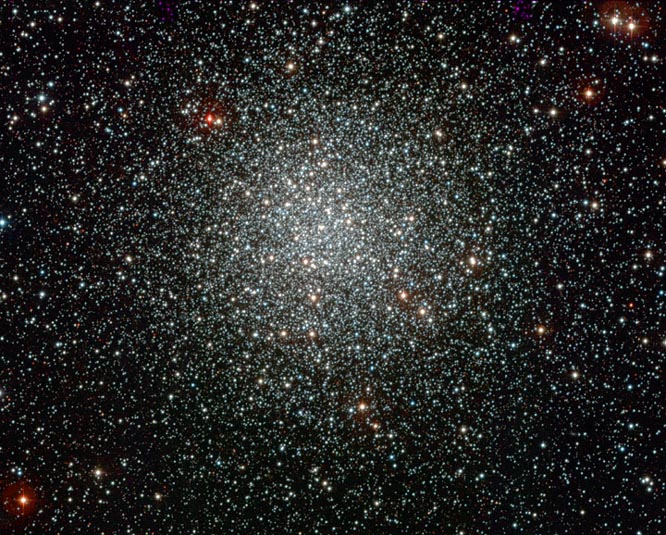
Globular Star Clusters
RA 10h 17m 36.86s Dec -46° 24' 45.31"
Vela
15,000 light years
8.24
18.2'
15.96 x 12.82 arcminutes
North is 0.1° left of vertical
ESO
February 8, 2010
Full view: S0820 Closeup: S1804
ABOUT THIS IMAGE:
A color-composite image of the globular cluster NGC 3201, obtained with the WFI instrument on the ESO/MPG 2.2-m telescope at LaSilla. Globular clusters are large aggregates of stars, that can contain up to millions of stars. They are among the oldest objects observed in the Universe and were presumably formed at about the same time as the Milky Way Galaxy, in the early phase after the Big Bang. This particular globular cluster is located about 16 000 light-years away towards the Southern Vela constellation. The data were obtained as part of the ESO Imaging Survey (EIS), a public survey being carried out by ESO and member states, in preparation for the VLT First Light.
From Wikipedia:
NGC 3201 is a low galactic latitude globular cluster in the southern constellation of Vela. It has a very low central concentration of stars. This cluster was discovered by James Dunlop on May 28, 1826 and listed it in his 1827 catalogue. He described it as "a pretty large pretty bright round nebula, 4' or 5' diameter, very gradually condensed towards the center, easily resolved into stars; the figure is rather irregular, and the stars are considerably scattered on the south".
The radial velocity of this cluster is unusually high at 490 km/s, larger than any other cluster known. This corresponds to a peculiar velocity of 240 km/s. While high, this is lower than the escape velocity of the Milky Way galaxy. It is located at a distance of 16,300 light years from the Sun and has an estimated 254,000 times the mass of the Sun. This cluster is about 10.24 billion years old
The stellar population of this cluster is inhomogeneous, varying with distance from the core. The effective temperature of the stars shows an increase with greater distance, with the redder and cooler stars tending to be located closer to the core. As of 2010, is one of only two clusters (including Messier 4) that shows a definite inhomogeneous population